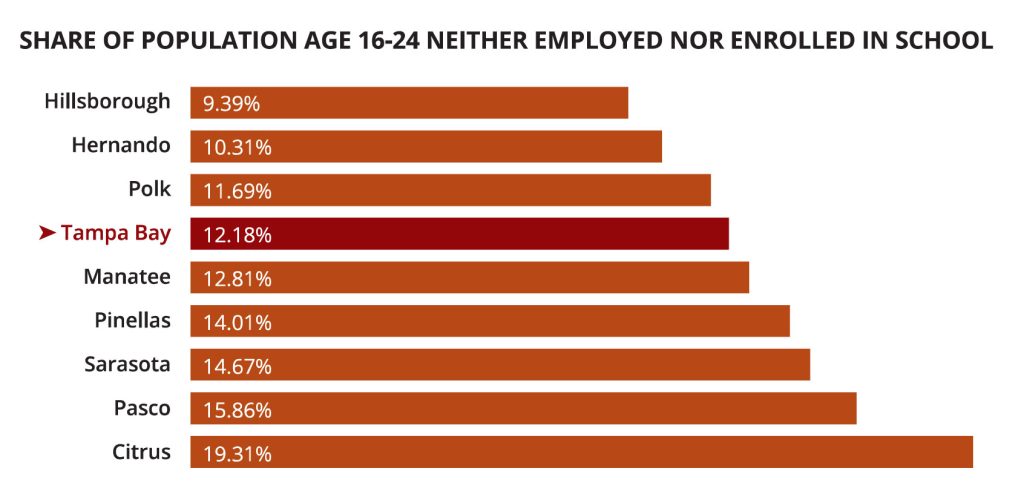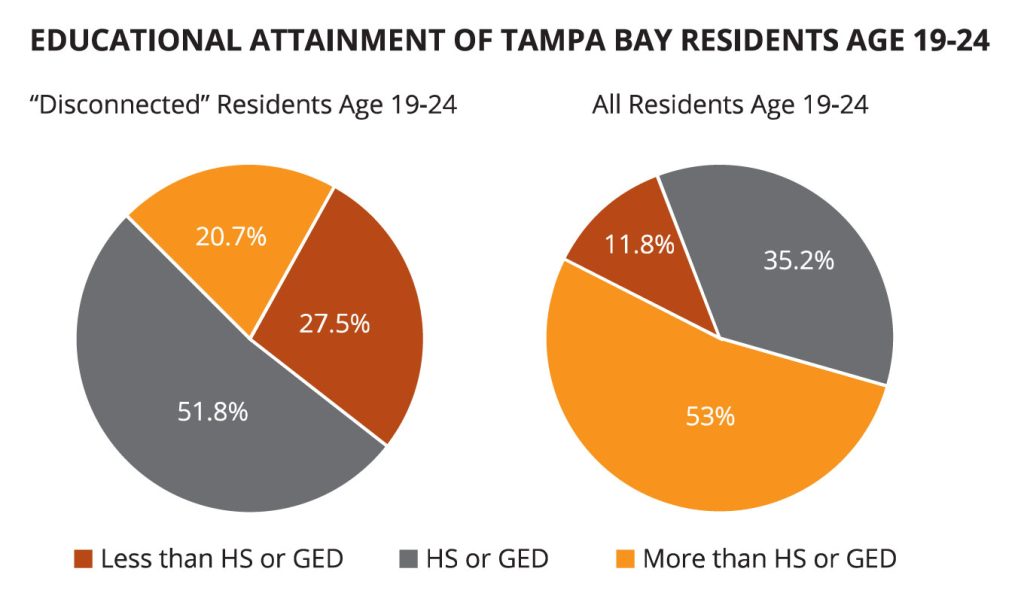Regional Performance
Within the communities of Tampa Bay, distinctions in the share of disconnected youth are apparent. Although Hillsborough County is home to the largest number of disconnected youths within the eight- county region (more than 15,000), the share of that age group neither employed nor enrolled in school, at 9.4%, is the lowest within Tampa Bay ‘s. At the end of the spectrum, Citrus County’s disconnected youth rate of 19.3 percent is 58 percent greater than the regional average.
Among racial and ethnic groups, there is some variation in the rates of disconnected youth, but less pronounced than the geographic distribution. Among the population age 16 -24, whites are less likely to be disconnected (11.73 percent) than their non-white counterparts (13.46 percent). Along ethnic lines, the Hispanic population 16-24 is only slightly more likely to neither be employed or enrolled in school than their non-Hispanic counterparts (12.01 percent).
Among older disconnected youth aged 19-24, the educational attainment of the majority share of these residents (51.8 percent) is a high school diploma or equivalency. When combined with disconnect youth at 19-24 who have less than a high school diploma or equivalent, the share rises to nearly 80 percent, which is significantly higher than that of all residents at 19-24 with a high school diploma or less. This may suggest that economic opportunities in the Tampa Bay region at the high school or lower-level attainment are either not appealing, not plentiful, or both.



